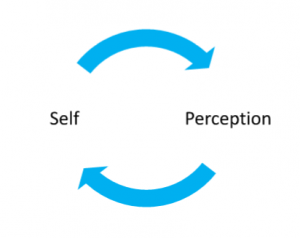“What you frequently ponder upon, that becomes the inclination of your mind”
– Buddha (1)
I am my perception. As I walk down the forest close to my home in the autumn, I smell the pine trees, I see the wide variation of colours as all other trees lose their leaves, and hear some birds singing softly. I am momentarily mesmerized by how beautiful and enjoyable it is to be surrounded by all this life and vibrancy. And from that, there is a sense of greatness of life, of oneness and a deeply harmonized sense of who I am and my place in the cosmos.
The thing is, as I am Swiss, I have grown up going to the mountains and forests very often, yet never got to perceive nature and myself in this way before. Undoubtedly this comes from a prolonged meditation practice and deepening appreciation of nature, both of which help to beautify a relationship to myself. Training in perception, as we do in meditation with qualities such as mindfulness, love, compassion, joy, equanimity and somatic sensitivity have influenced how I perceive myself, and vice-versa.

I have often been taught that meditation is about “being the present moment with what is.” However, though acceptance is obviously a key component of meditation, as I follow my perceptual development over these last 15 years of practice, I see other patterns emerging: more beauty, more belonging, more calm and more joy for example. And so why not intentionally develop these outcomes
This is something I have been growing into these past few years: intentionally orienting my mind towards ‘positive’ qualities such as beauty, space, pleasure, contentment and gratitude. I have found that there is most often something, even the tiniest little thing, in my perceptual experience that involves some kind of positive quality, and with a sustained attention towards that, it grows (2). At this point in my practice, I spend most of my time co-creating my experience along with spontaneous impulses coming from my nervous system, the external environment as well as imaginal drives. This last dynamic of imagination, seems to be most attractive to me now, where I allo.w my mind to create shapes, forms and colours that seem to be most harmonizing to my experience (in my imaginal repertoire). One of the indicators for this harmonizing quality that I intuit around is the somatic resonance of these imaginal impulses. For example, in my meditation this morning, I felt some narrowing perceptions on my body which got me feeling more anxious, and spontaneously I would reach out for more space and orientation outside my body, I literally created space and broadened the size of my energetic and perceptual field. It then got to the point where it felt too large and anxiety started creeping in again, with agitating waves and a feeling of fear, so I relaxed by coming back into the body softly, feeling the earth under me and gently sensations of ease and pleasure also available. This creative-imaginal movement from the creation of space, back to orienting towards palpable somatics of pleasure and groundedgrowness is an example of the intuitive skill I call somatic imaginal: allowing the nervous system to feel soothed, brightened and dynamized (“somatic”) by producing whatever impulses coming to mind spontaneous (“imaginal”).
Next time you sit in meditation, it may be worth experimenting to find out: “what images (forms, colours, sounds, voices, dimensions) help to soften and dynamize my somatic experience in this moment?”
Come and join our next Dharma Gathering on December 4th to further embody your imaginal capacity!
(1) Two Kinds of Thought, Majjhima Nikāya 19
(2) See Broaden-and-Build theory from Barbara Fredrickson
